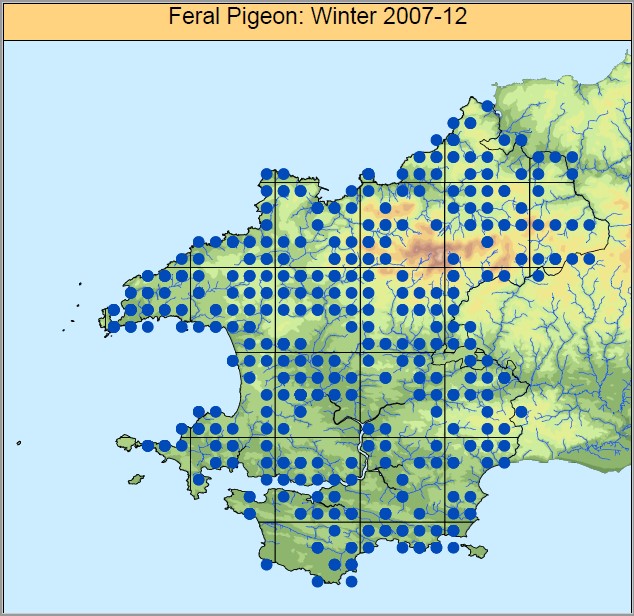Columba livia – Resident.
Mr. Tracy, writing fifty years ago, stated that a few pairs then nested in the cliffs on the coast. But we must state that we have never seen a Pembrokeshire specimen of this species, and some eggs sent to us from St. David’s were evidently too large for those of the Rock-dove. However, from what Mr. Mortimer Propert tells us, we believe that there may be a pair or two of genuine Rock-doves nesting in the caves on Ramsey Island. We have ourselves, on various visits to that most romantic and charming island, seen many Pigeons flying along the cliffs, but were never able to get sufficiently near them to be certain what they were.
Mr. E. W. H. Blagg, of Cheadle, Staffordshire, who was staying at Tenby in the summer of 1887, assures us that he saw Rock-doves in the neighbourhood of the Stack Rocks, and also at the “Huntsman’s Leap,” a name given to a deep fissure in the cliffs, where there is a sheer descent of a hundred feet or more to the beach below. “At the latter spot,” he writes, ” I can call to mind seeing a few Doves come out of the deep fissures in the steep cliffs, far away below us, so that we had a good view of their white rumps, and this was my first introduction to Rock-doves; since then, in 1892, I have seen crowds of wild Rock-doves in the Shetlands.” He adds further ” Stock-doves I have known well all my life. Of course there are lots of them near Tenby, and I have come across plenty of them on the coast of Carnarvonshire; they seem to prefer ivy-covered cliffs, not very high as a rule, but I think the Rock-Doves like cliffs that are too wild and steep for ivy to grow on them, with caves and deep fissures to shelter in.”
Mathew M.A. 1894, Birds of Pembrokeshire and its Islands
More about the Rock Dove in Pembrokeshire






